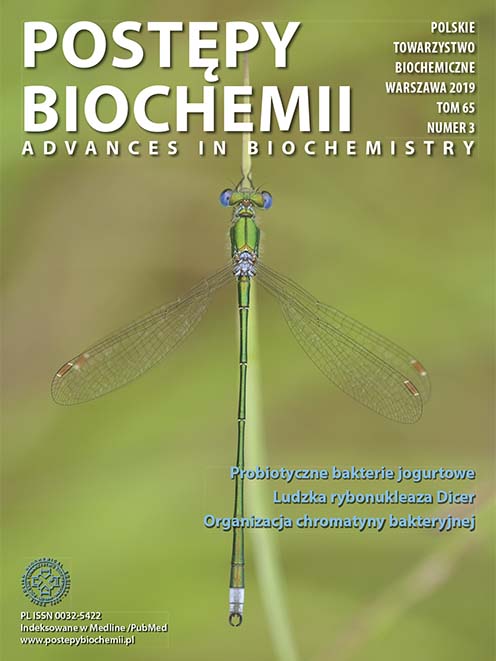The canonical Wnt pathway
The canonical Wnt pathway â functional structure and importance for head and neck squamous cell carcinomas
DOI:
https://doi.org/10.18388/pb.2019_268Abstract
The canonical Wnt pathway is related to regulation of embryogenesis, cell differentiation and proliferation. Various proteins are necessary for proper signal transduction and β-catenin serves as the main mediator. In off-state of the Wnt pathway β-catenin undergoes proteasomal degradation, while in on-state increase of cytoplasmic concentration of β-catenin occurs followed by β-catenin translocation into the cell nucleus. Interaction between β-catenin and TCF/LEF transcription factors activates the expression of over hundred target genes of the Wnt pathway. Highly active Wnt signaling is observed in many cancers, including head and neck squamous cell carcinomas. Knowledge of the functional structure of the canonical Wnt pathway enables search of therapeutic molecular targets to effectively inhibit transcriptional activity of β-catenin in cancer cells.
Downloads
Published
Issue
Section
License
All journal contents are distributed under the Creative Commons Attribution-ShareAlike 4.0 International (CC BY-SA 4.0) license. Everybody may use the content following terms: Attribution — You must give appropriate credit, provide a link to the license, and indicate if changes were made, ShareAlike — If you remix, transform, or build upon the material, you must distribute your contributions under the same license as the original. There are no additional restrictions — You may not apply legal terms or technological measures that legally restrict others from doing anything the license permits.
Copyright for all published papers © stays with the authors.
Copyright for the journal: © Polish Biochemical Society.




